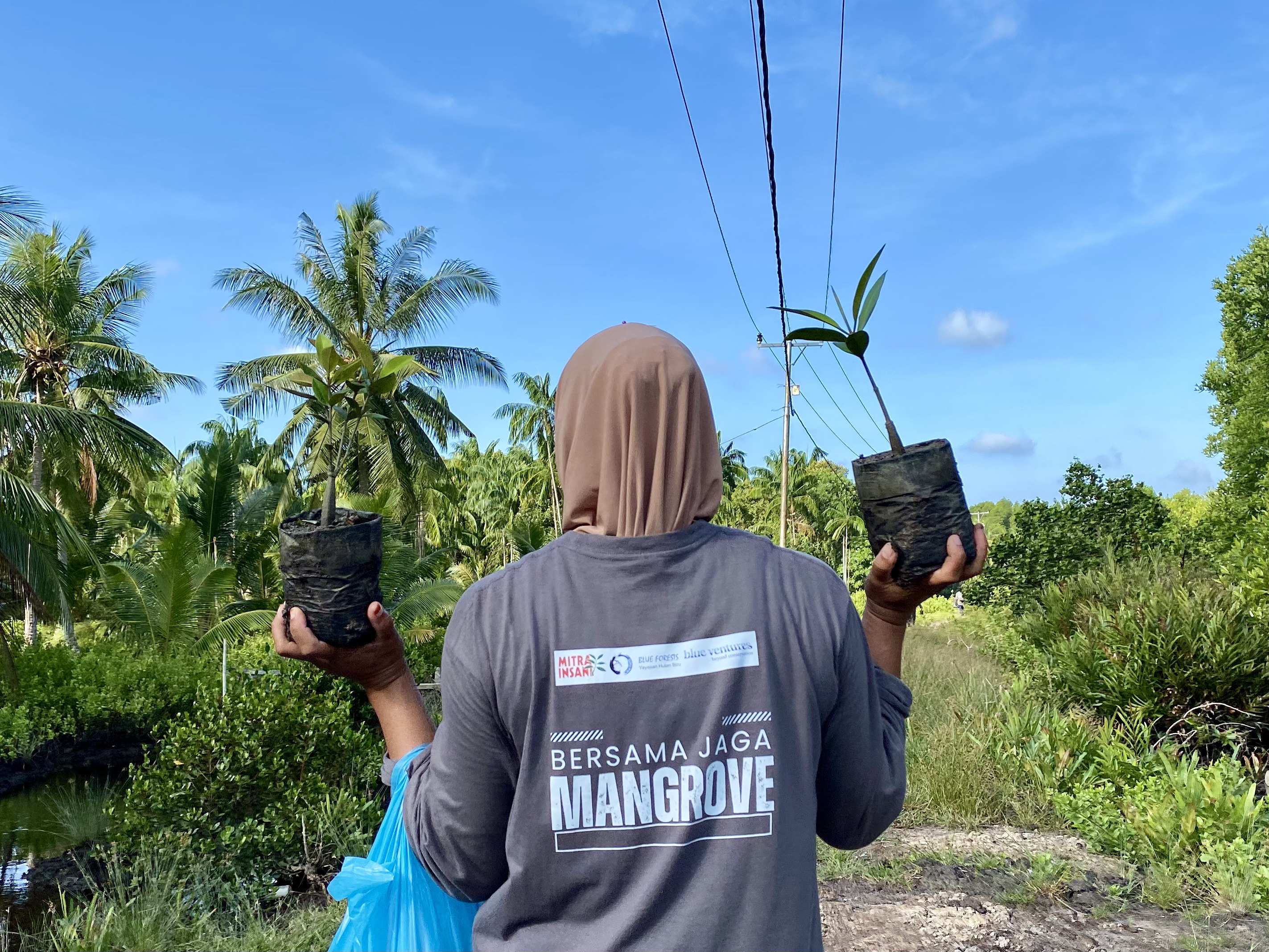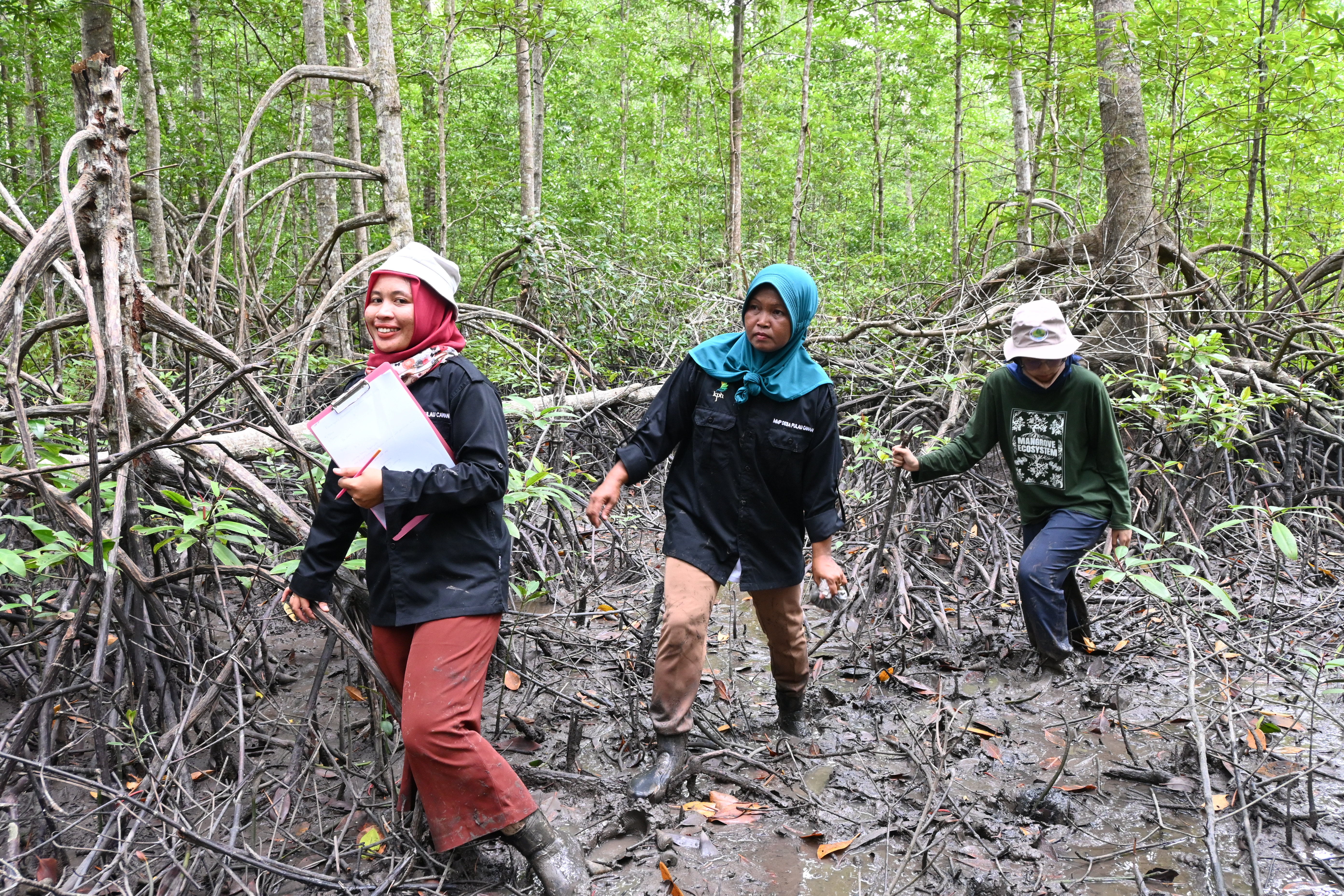
Natural resource conservation faces many challenges, one of them being gender roles
and gender discrimination. On the whole, the conservation world is still dominated by men,
despite the fact that women are among the social groups most vulnerable to environmental
change and that women often play major roles in the day-to-day management of local natural
resources. The involvement of women in conservation work is needed to provide new
perspectives in the management and preservation of the environment.
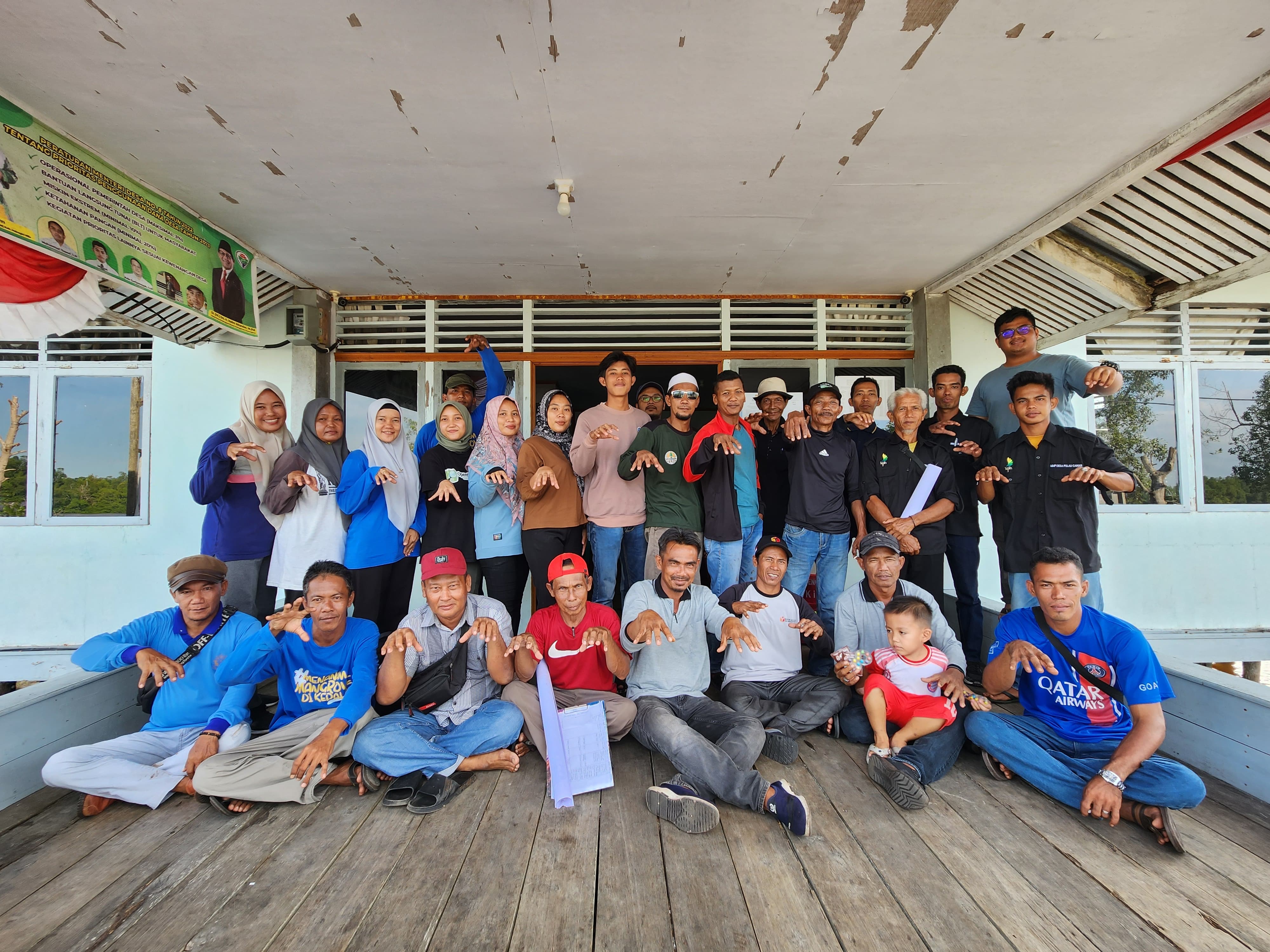
The gradual process of increasing women’s representation in coastal area conservation
can be seen at Blue Forest project sites in Indragiri Hilir regency, Riau province. For example, in
Igal village and Cawan Island village, several women’s groups have emerged. Tasked with
community-based environmental stewardship, these women work shoulder-to-shoulder to
protect mangrove forests and coastal ecosystems from exploitation. Although the total number
of women involved is still small, these groups have proven to be a valuable source for
understanding the potential role for women in Indragiri Hilir’s conservation movement and have
given a new color to these efforts.
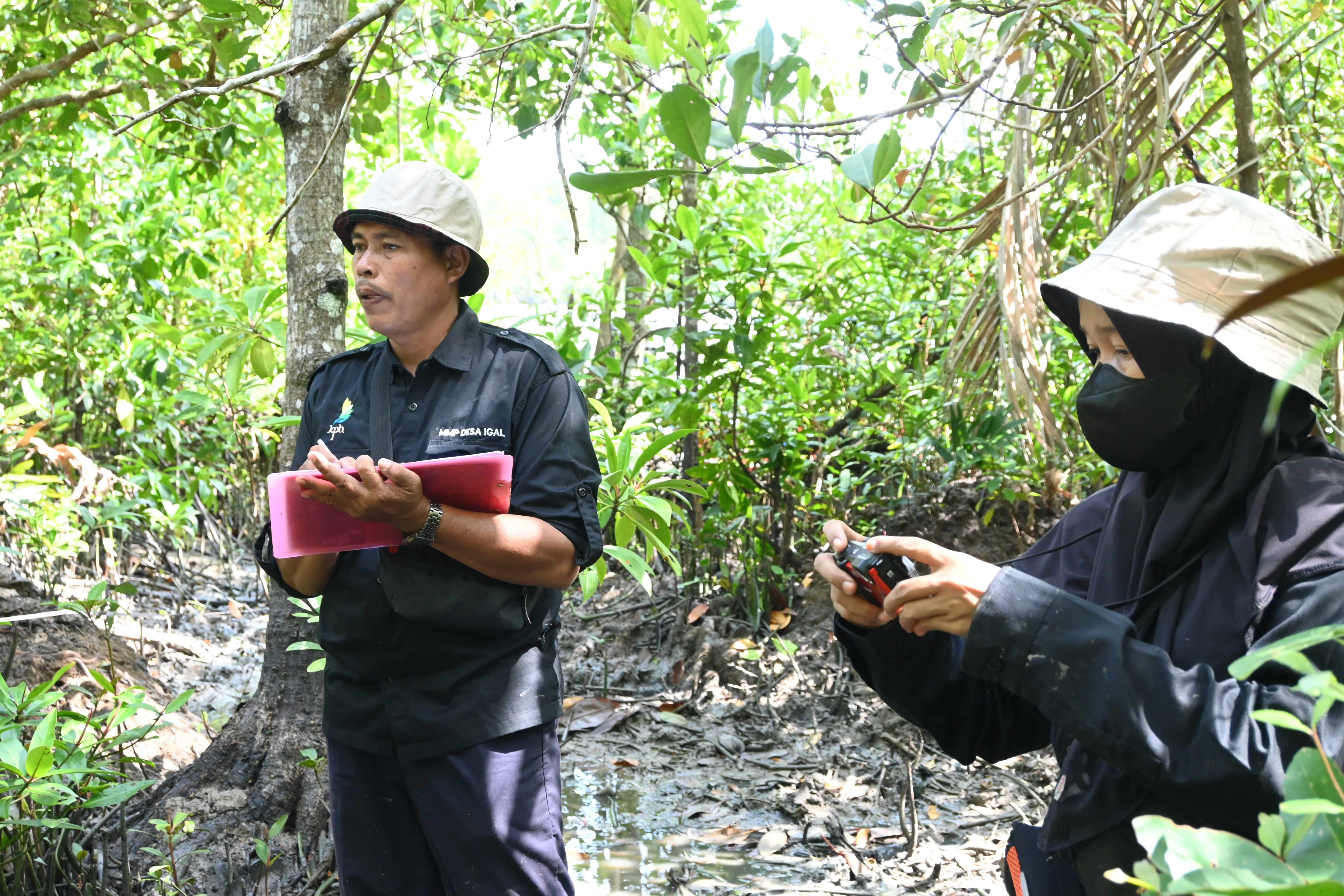
Jumriana (37) is a member of Masyarakat Mitra Polhut (MMP, Community Forest Ranger
Partners) and Kelompok Masyarakat Pengawas (Pokmaswas, Community Forest Watchers) in
Igal village. Jumriana, or Yana as she is affectionately called by friends, originally returned to
her hometown after obtaining her Master’s degree in the department of Social Welfare Sciences
at the University of Indonesia, in Jakarta, and staying on in the capital city to work for seven
years after graduating. “Calling it my calling in life, that would be a bit cliché. I just want to help
out,” stated Yana about her motivation to join as an active member in the MMP and Pokmaswas
groups.
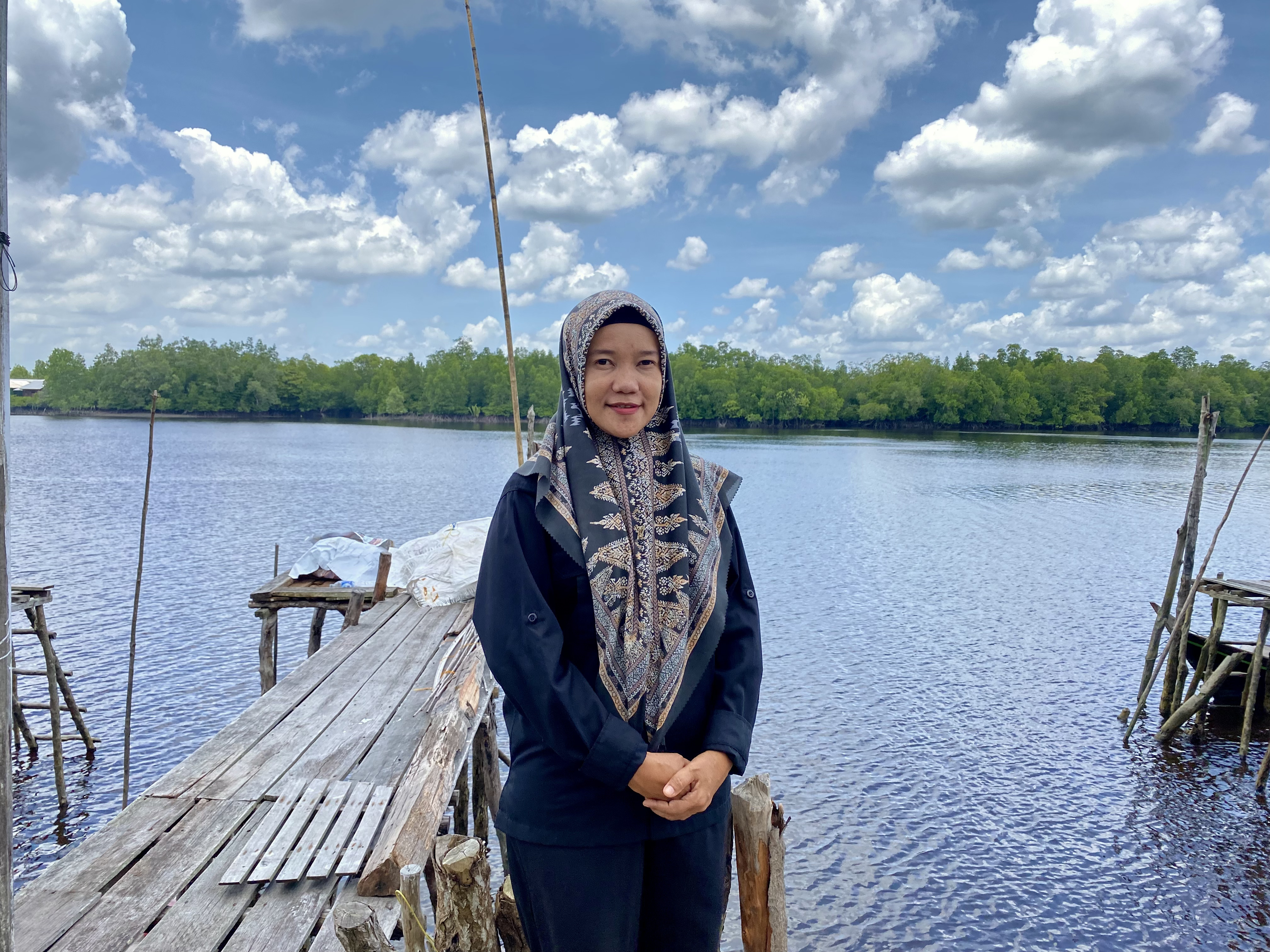
Four women from Cawan Island village, Nur Aisyah (30), Julia Nafita Yanti (28), Rahimah (43),
and Raja Ramlah (47), are known to always been seen together working as members of the
local MMP and Pokmaswas. These women also routinely collect sea snails from the village
waters, which usually sell for around Rp25,000/kg (around $1.50 USD). It was precisely their
work as snail collectors that led them to become involved in conservation. The snail catches
were no longer abundant like before, which the women intuitively connected to the impacts of
coastal environmental degradation, pushing them to participate in efforts to protect these
ecosystems.

Furthermore, environmental changes continued to hit home in the form of seasonal high tide
flooding, which now routinely came every year. These floods managed to reach and inundate
the women’s homes and gardens, decreasing agricultural production and impacting local food
sources. The environmental changes can be traced to both global processes, like climate
change, and local processes in Indragiri Hilir regency, including wide-scale mangrove
clearcutting, with mangrove wood commonly used for charcoal and as an affordable
construction material for local buildings, representing a dilemma between development and
environment. Harmful fishing practices, such as the use of poison, have also been documented
in the region.
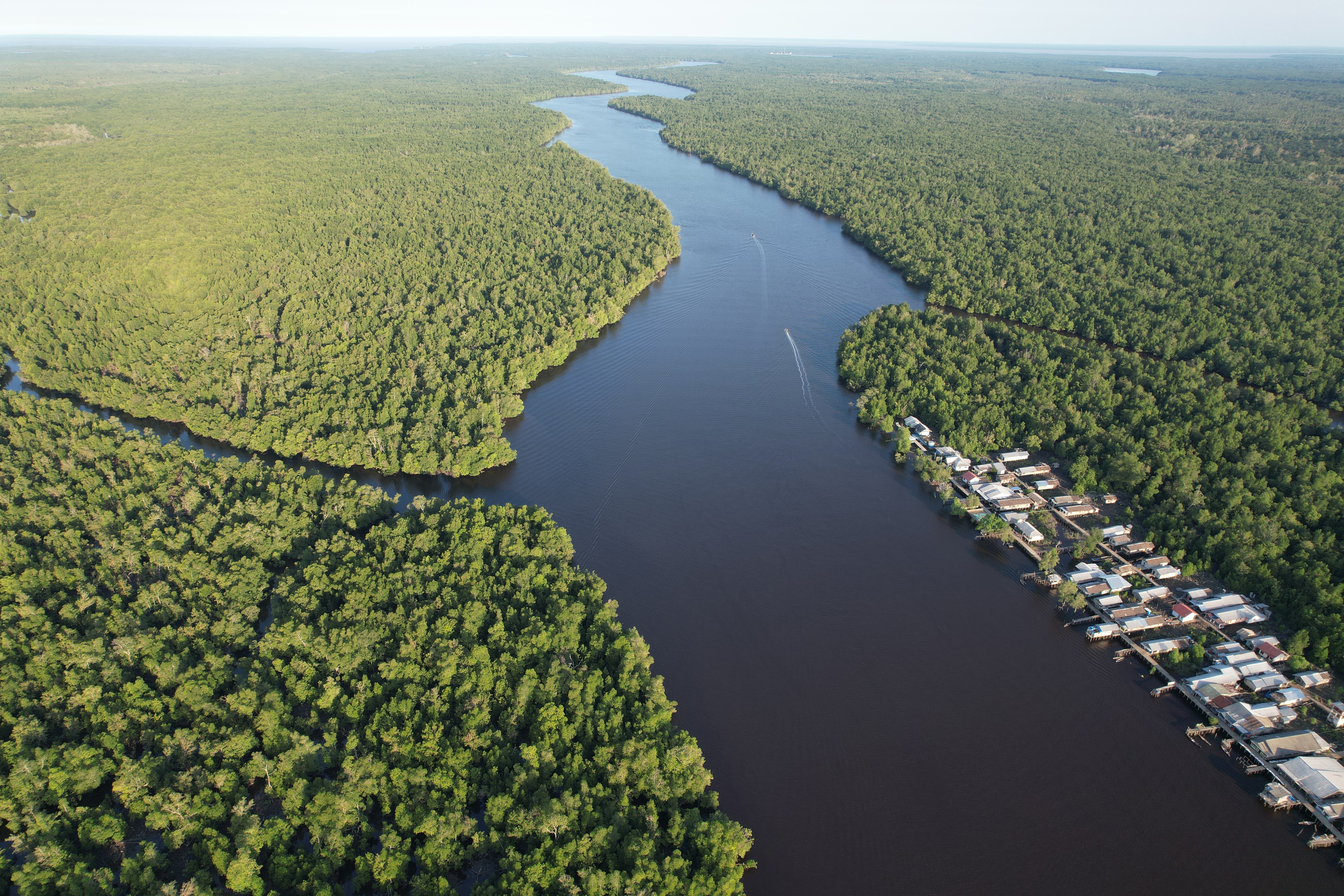
Given this situation, village-level forest watch groups like MMP and Pokmaswas have an
important role to play in the protection of their local natural resources. This is exactly what
Jumriana and the women of Cawan Island have set out to do with their local groups. Even
though the groups are still dominated by men, the women have an impactful role and voice
within these groups, which require socially conscious approaches to dealing with violations and
decision making.
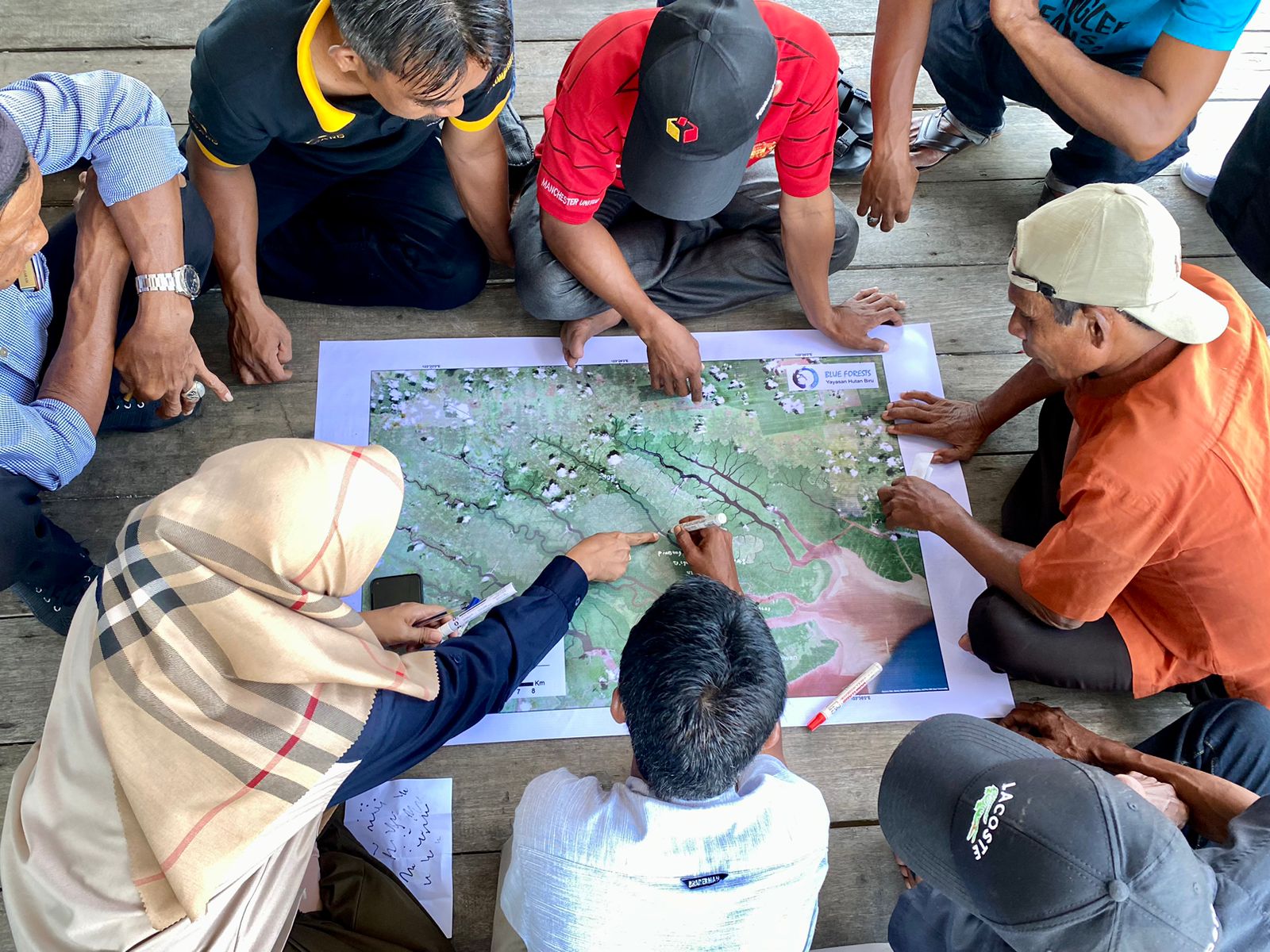
The women have found full support from their fellow group members and from their families.
Whenever they are engaged in work with the groups, they do not feel that they are treated
differently only because they are women. However, one challenge is balancing domestic
obligations with conservation activities. Jumriana and the Cawan Island women have adopted
new schedules to accommodate both worlds. For example, they are now used to waking up
extra early in order to cook for the household on days with group conservation activities. They
often must negotiate between the demands of these two roles and choose between them in the
case of schedule conflicts.

The women’s involvement in the forest watch groups has led to improvements in environmental
messaging and a decrease in the number of violations. Their conservation work also bleeds
over in the domestic and social spheres, where the women often find themselves sharing their
stories and experiences. For Jumriana and the Cawan Island women, everyday gatherings for
gossip and small talk, an essential feature of life in the villages, have become opportunities to
educate family, friends, and neighbors on the challenges, potential, and importance of
sustainable mangrove management. This approach can be considered a strategic and
sustainable method of increasing local environmental consciousness.
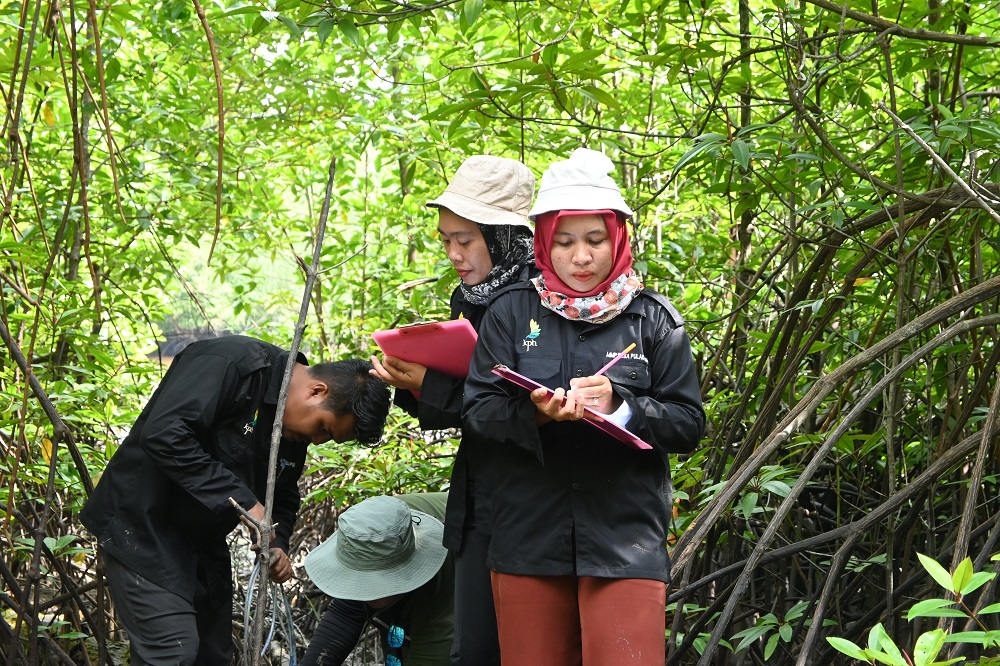
Even though many of their efforts to protect the environment and educate their communities
may not have instantly visible impacts, these women conservationists believe that their work
with make a difference in the long term. They also want to contribute to the development of
alternative livelihoods for the women in their communities through the promotion of processed
mangrove products and fisheries, which they hope will allow families to support themselves in a
more sustainable way.
